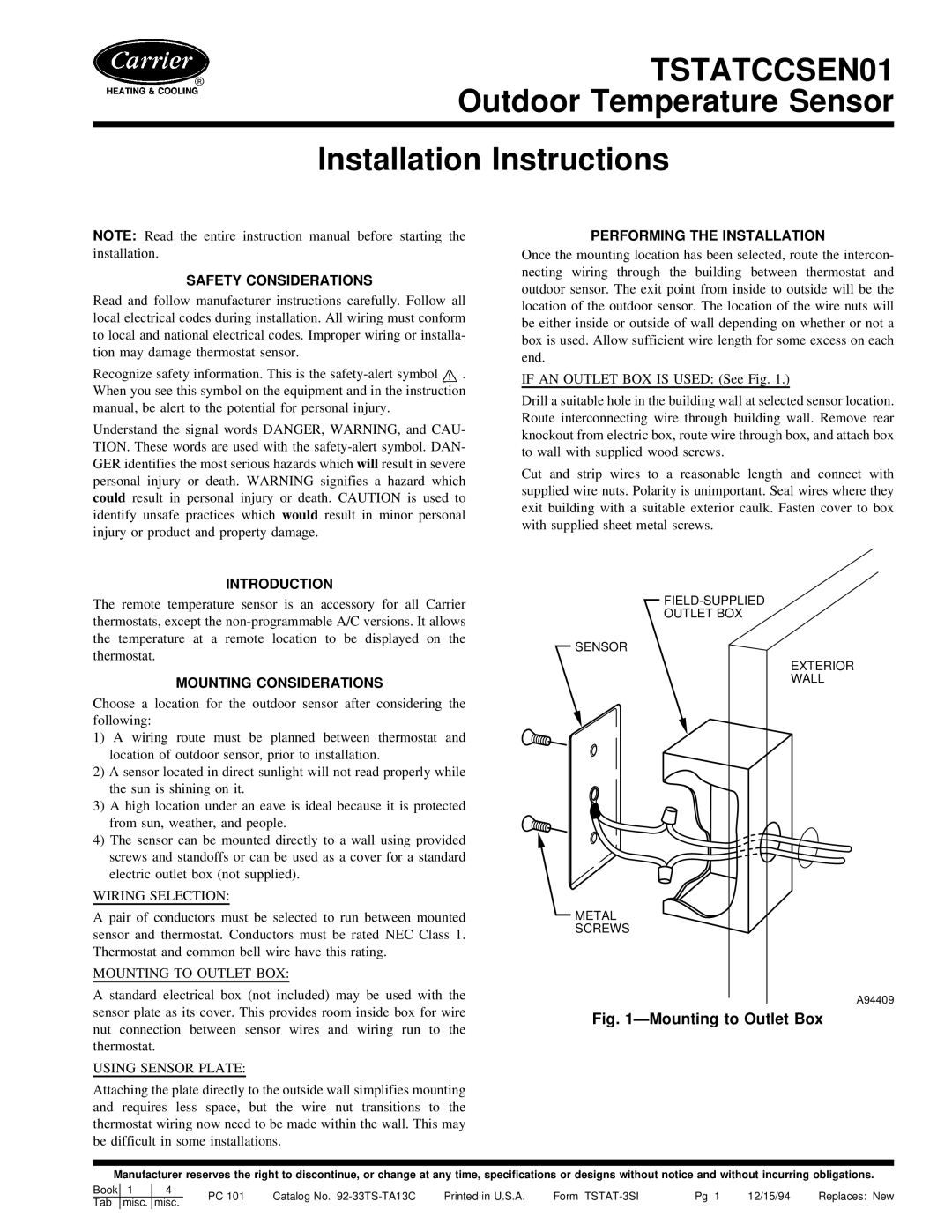TSTATCCSEN01 specifications
The Carrier TSTATCCSEN01 is an advanced thermostat designed to optimize the management of heating, ventilation, and air conditioning (HVAC) systems in residential and commercial settings. This device stands out due to its user-friendly interface and a host of sophisticated features that enhance energy efficiency and comfort.One of the main characteristics of the TSTATCCSEN01 is its compatibility with Carrier's innovative Infinity System, which allows for seamless integration with various HVAC equipment. This integration helps streamline operation, making it easier for users to control their heating and cooling systems efficiently. The thermostat utilizes a contemporary design with an intuitive touchscreen interface, simplifying user interactions and settings adjustments.
Equipped with smart technologies, the TSTATCCSEN01 supports Wi-Fi connectivity, enabling users to control their thermostat remotely via a smartphone or tablet. This remote access allows homeowners to adjust their home’s temperature from virtually anywhere, ensuring that their living spaces are always comfortable upon arrival. The thermostat also supports programmable scheduling, allowing users to set specific heating and cooling schedules according to their daily routines, which further promotes energy savings.
The TSTATCCSEN01 comes with advanced sensing capabilities, including humidity and temperature monitoring. By accurately detecting the indoor climate, the thermostat can adjust operations automatically, optimizing comfort levels while reducing energy consumption. Additionally, the Energy Management feature provides users with insights into their energy use, empowering them to make informed decisions for further savings.
Another innovative aspect of the Carrier TSTATCCSEN01 is its compatibility with voice-activated technologies. Users can integrate the thermostat with smart home systems such as Amazon Alexa or Google Assistant, enabling hands-free control through simple voice commands. This feature adds convenience and enhances the overall smart home experience.
In conclusion, the Carrier TSTATCCSEN01 is a state-of-the-art thermostat that combines advanced features, energy-efficient technologies, and smart functionalities. Its compatibility with existing HVAC systems, coupled with user-friendly controls and remote access capabilities, makes it an ideal solution for modern homes seeking to enhance comfort while managing energy consumption effectively. This unit reflects Carrier’s commitment to innovation and quality in HVAC solutions.

